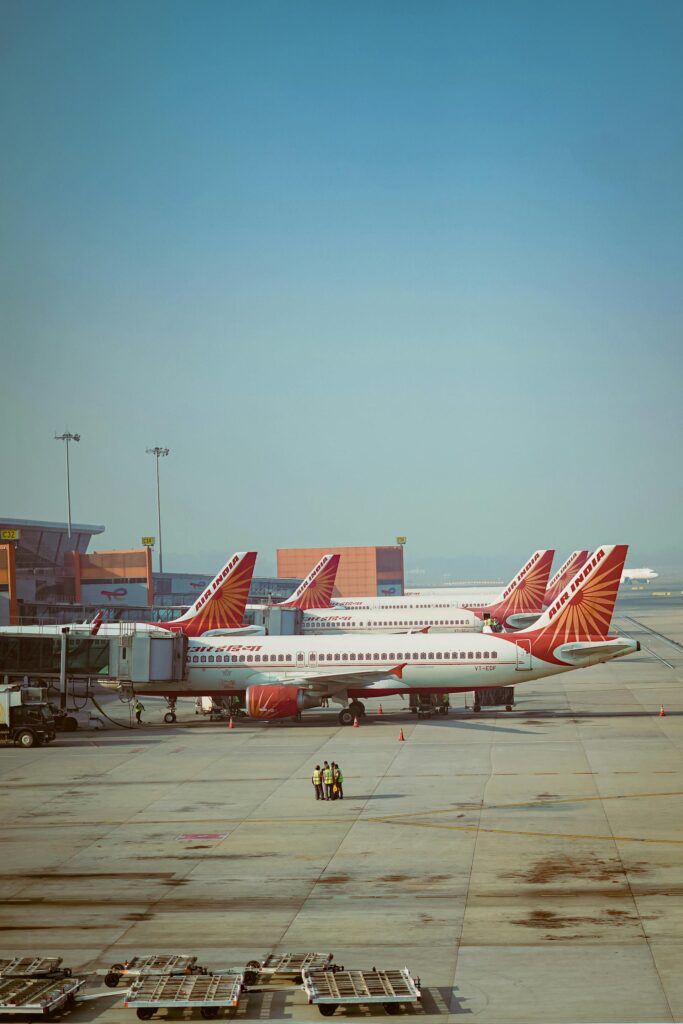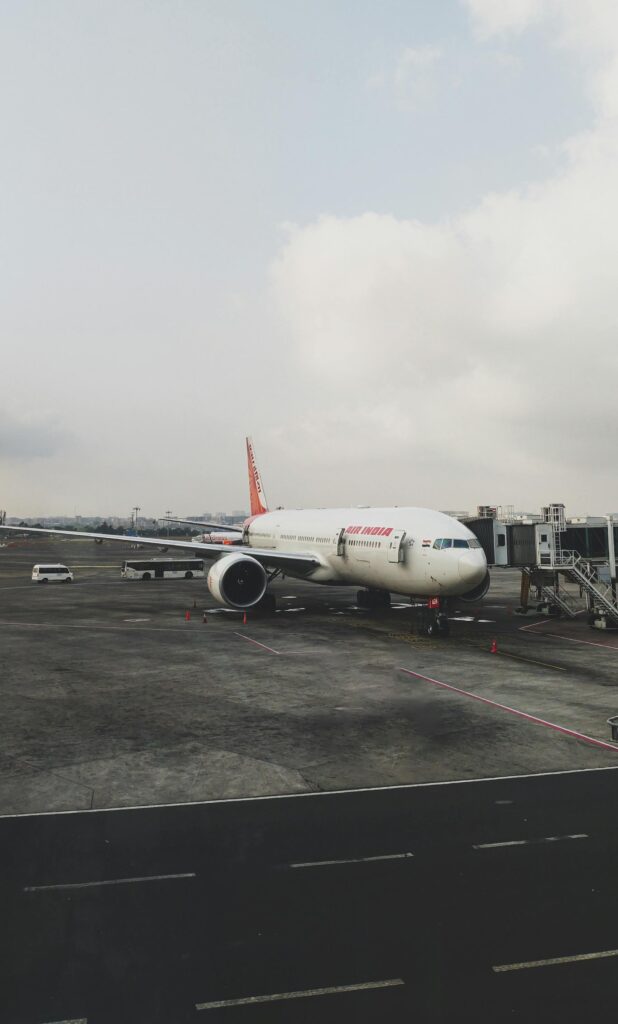On June 25, 2025, Air India flight AI2354 from Mumbai to Bangkok became the center of a viral controversy when a passenger spotted a bird’s nest lodged in the wing of an Airbus A320Neo, causing a three-hour delay. This startling incident, amplified by social media, has spotlighted critical gaps in aviation maintenance and safety protocols. As Air India navigates its transformation under Tata Group ownership, the episode underscores the urgent need for innovation in India’s aviation sector, opening doors for investors in hubs like Bengaluru and New Delhi. Discover how this incident fuels opportunities at YTC Ventures, a platform connecting investors to India’s aviation future.
The Bird Nest Incident: A Viral Maintenance Mishap
Just before the scheduled 7:45 AM takeoff from Chhatrapati Shivaji Maharaj International Airport, passenger Hanshi Paramjeet Singh noticed a nest of twigs and grass in the aircraft’s wing. A video, shared by Rajnesh Choudhary on Instagram and viewed over 1 million times, captured ground staff removing the debris. Air India promptly swapped the aircraft, with the flight departing around noon, prioritizing passenger safety. However, the incident sparked outrage on X, with user @AyazAziz tweeting, “How can you be so blind @airindia your ground staff didn’t even notice a birds nest thanks to the passenger who caught this in his camera.” The event, dubbed the “Air India bird nest incident,” exposed vulnerabilities in pre-flight inspections at urban airports, where Mumbai alone recorded 59 bird strikes in 2024.

Contextualizing Air India’s 2025 Challenges
The bird nest incident is part of a broader string of setbacks for Air India in 2025. A devastating crash on June 12, 2025, involving flight AI171 in Ahmedabad killed 270 people, raising questions about maintenance lapses. Investigations into the Boeing 787-8 Dreamliner crash point to engine thrust or mechanical issues, with the DGCA ordering safety checks on Air India’s 33 Boeing 787s. Additional disruptions included:
- June 2025: Bird strikes grounded flights AI2454 (Delhi to Thiruvananthapuram) and AI2469 (Delhi to Pune), requiring inspections.
- June 17, 2025: Flight AI315 (Hong Kong to New Delhi) returned mid-flight due to a technical snag, landing safely for checks.
X users like @ShuklaRajiv criticized “serious lapses in Air India’s maintenance protocols,” while @flyingbeast320 highlighted pilots rejecting aircraft with excessive Minimum Equipment List (MEL) issues. These incidents, combined with a hoax bomb threat on a Phuket-Delhi flight, have dented passenger trust, with @rajeshsawhney noting, “No one wants to fly Air India anymore.”
Implications for Aviation Safety
The bird nest incident underscores a growing challenge at urban airports: wildlife interference. Mumbai’s proximity to bird-attracting sites, like Versova’s waste station, contributes to frequent bird strikes, with 319 reported in Ahmedabad from 2018–2023. The DGCA’s Rule 91, prohibiting such sites near airports, is often inadequately enforced. Experts call for advanced wildlife mitigation systems, such as AI-based bird detection and eco-friendly waste management, to prevent incidents like nests in aircraft parked overnight.
Air India’s response—swift aircraft replacement and DGCA-ordered audits—shows commitment to safety but highlights the need for systemic upgrades. Mitu Samar Jha, a Mumbai-based risk advisor, told the BBC, “Consistent communication and robust processes are key to rebuilding trust post-incident.” For Air India, addressing these gaps is critical to its $400 million retrofit and 470-aircraft expansion under Tata’s five-year plan.
Investment Opportunities in Bengaluru and New Delhi
The Air India bird nest incident and related challenges signal a pivotal moment for India’s aviation sector, projected to serve 300 million passengers by 2030. Bengaluru and New Delhi, key aviation hubs, offer high-ROI opportunities to address these issues:
- Bengaluru: As India’s Silicon Valley, Bengaluru hosts HAL, NAL, and Kempegowda International Airport (37 million passengers annually). Investments in AI-driven maintenance solutions, wildlife mitigation tech, and sustainable aviation are booming. YTC Ventures connects investors to Bengaluru’s 7,000+ startups innovating in aerospace.
- New Delhi: The Indira Gandhi International Airport, a logistics and policy hub, attracts FDI in air cargo and green aviation. Infrastructure upgrades and safety tech are critical, especially post-Rao’s 1991 FDI reforms. YTC Ventures curates opportunities in New Delhi’s thriving market.
These cities, shaped by PV Narasimha Rao’s economic liberalization, are ideal for investors seeking to fund solutions like bird strike prevention systems and smart airport technologies. YTC Ventures bridges investors to these high-growth prospects.
Impact on Air India’s Transformation
Acquired by Tata Group in 2022 for $2.4 billion, Air India is in the “final climb phase” of a five-year turnaround, with a $400 million retrofit, 470 new aircraft orders, and digital upgrades. Despite progress, the 2025 incidents threaten its reputation. Jitendra Bhargava, a former Air India executive, told the BBC, “There will definitely be a short-term impact where people may be wary of flying Air India.” However, he remains optimistic, stating, “The accident will not derail the ambitious growth plans.” India’s aviation market, projected to reach 300 million passengers by 2030, supports this optimism, with Air India’s expansion driving demand for infrastructure and technology.
Air India’s Journey: From JRD Tata’s Vision to 2025 Challenges and Investment Opportunities
Air India, India’s flag carrier, has soared through nine decades of triumphs and turbulence, evolving from a modest mail carrier to a global airline under Tata Group’s renewed stewardship. Founded in 1932 by JRD Tata, the airline has shaped India’s aviation history while facing recent setbacks, including a viral bird nest incident in 2025. As Air India navigates its transformation, it highlights investment opportunities in Bengaluru and New Delhi’s aviation ecosystems. Explore how this legacy fuels growth at YTC Ventures, connecting investors to India’s aviation future.
From Tata Airlines to National Icon
Air India began as Tata Air Services in 1932, when JRD Tata, India’s first licensed pilot, flew a de Havilland Puss Moth from Karachi to Mumbai, carrying mail and two passengers. Renamed Tata Airlines in 1938, it expanded domestic routes and launched international flights to Colombo. On July 29, 1946, it became a public company as Air India, and post-independence in 1947, the Indian government acquired a 49% stake. The airline’s first international flight, a Lockheed Constellation named Malabar Princess, took off from Mumbai to London via Cairo and Geneva on June 8, 1948.

In 1953, the Air Corporations Act nationalized India’s aviation, merging eight airlines into Air India (international) and Indian Airlines (domestic). JRD Tata remained chairman until 1977, overseeing milestones like the 1960 introduction of the Boeing 707, making Air India the first Asian airline with a jet fleet, and the 1962 all-jet airline status. The 1970s and 1980s saw global expansion, with Boeing 747s enabling non-stop New York–Delhi flights by 1993. The iconic Maharaja mascot, created by Bobby Kooka, and a celebrated art collection, including Salvador Dalí’s ashtrays, cemented Air India’s cultural legacy.
However, post-1990s liberalization brought competition from low-cost carriers like IndiGo. Air India struggled with losses, exacerbated by the 2007 merger with Indian Airlines, forming Air India Limited. By 2021, the airline’s debt soared to ₹61,000 crore ($9.5 billion), prompting privatization.
Privatization and Transformation Under Tata
In October 2021, Tata Group reacquired Air India for ₹18,000 crore ($2.4 billion), assuming ₹15,300 crore of debt. Under CEO Campbell Wilson, appointed in 2022, Air India launched Vihaan.ai, a five-year transformation plan. Key moves include:
- Fleet Expansion: A record-breaking order of 470 aircraft (210 Airbus A320neo, 40 A350s, 190 Boeing 737 MAXs, 20 787-9s, 10 777-9s) worth $70 billion, modernizing the current 128-aircraft fleet.
- Mergers: AirAsia India was rebranded AIX Connect and merged with Air India Express in 2022. Vistara merged with Air India in November 2024, with Singapore Airlines holding a 25.1% stake in the unified entity.
- Innovation: Air India became the first Indian airline to receive DGCA’s Design Organisation Approval (CAR 21) in 2024, enabling in-house aircraft interior modifications with Tata Technologies.
Air India now serves 102 destinations, with hubs at Delhi’s Indira Gandhi International Airport, Bengaluru’s Kempegowda International Airport, and Mumbai’s Chhatrapati Shivaji Maharaj International Airport. It joined Star Alliance in 2014, boosting its global reach.

Comments